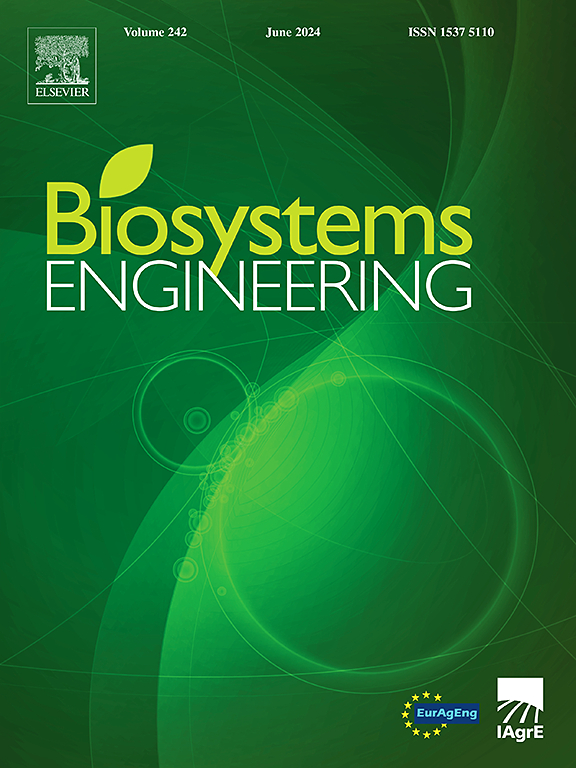An opensource indoor climate and yield prediction model for Chinese solar greenhouses
IF 4.4
1区 农林科学
Q1 AGRICULTURAL ENGINEERING
引用次数: 0
Abstract
This study introduces a climate model for Chinese solar Greenhouses (CSGs) integrated with a tomato yield model. The developed model evaluates how CSG design and operation influence indoor climate and yield. It was described and validated against three experiments, with different scenarios for selected initial conditions to verify the ability to simulate the impact of large thermal masses. Significant model parameters were identified through sensitivity analysis. The climate and yield model accurately predicted indoor climate variables and tomato yield across the three experiments from one empty CSG in Shenyang and two operational production CSGs in Beijing. Indoor air temperature showed the acceptable results for long-term simulation, with an RRMSE of 12.1%, RMSE of 1.58 °C, and ME of 1.08 °C. The model, for the first time, incorporated the balance of carbon dioxide under CSG conditions achieving an RRMSE ranging from 8.64% to 27.1%, RMSE from 63.72 to 192.5 ppm, and ME from −17.8 to 2.45 ppm. Additionally, tomato yield predictions exhibited satisfactory errors, with an RRMSE ranged from 22.3% to 26.3%, RMSE ranged from 0.61 to 0.71 kg m−2, and ME ranged from −0.33 to 0.46 kg m−2. The sensitivity analysis underscored the significance of air exchange-related parameters, and introducing a control variable for the optimal LAI would be beneficial for enhancing accuracy. This model is publicly available as open-source Python code at https://github.com/jdsjxin/CSGtom, providing a valuable tool for optimising the design and operation of existing CSGs and guiding the improvement of new CSGs in northern China.
求助全文
约1分钟内获得全文
求助全文
来源期刊

Biosystems Engineering
农林科学-农业工程
CiteScore
10.60
自引率
7.80%
发文量
239
审稿时长
53 days
期刊介绍:
Biosystems Engineering publishes research in engineering and the physical sciences that represent advances in understanding or modelling of the performance of biological systems for sustainable developments in land use and the environment, agriculture and amenity, bioproduction processes and the food chain. The subject matter of the journal reflects the wide range and interdisciplinary nature of research in engineering for biological systems.
 求助内容:
求助内容: 应助结果提醒方式:
应助结果提醒方式:


